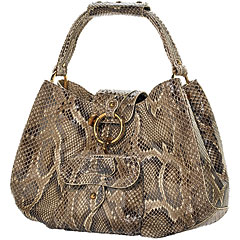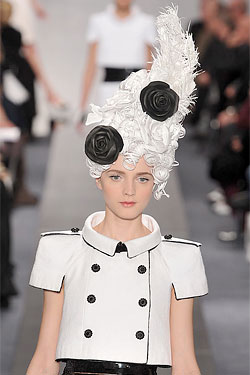
To the right is Steven Klein photograph I love--a gorgeous haute couture dress covered with silver-bead sea urchins, by Lagerfeld, ethereally styled by Tonne Goodman, worn by Cate Blanchett. I find it transportive. It lives on the side of a file cabinet just alongside my terminal. I look at it several hundred times a day and imagine being in that world, in that dress, that beautiful.
Meanwhile, back on the screen, are scans of the offerings on eBay's vast closet. As often as not, I decide to click away from particular vintage dress, not because of any flaws or sizing problems, but because it's being worn--modeled--by a nonprofessional. To post any examples would be unkind . . . they're easy enough to find. The models are typically vintage store owners, or the owner's sister, or the owner's babysitter, somebody who has been told that they're cute enough to model. Most of them are attractive. The thing is, in the pictures, they look way too much themselves.
When I see the pictures, I think "oh that's a cute dress on them," or "that doesn't quite work on them," and cannot make the perceptual leap to imagining the dress on me. This is because so much of their personality infuses in through their appearance, stance, tattoos and piercings, hairstyle, distracting bric-a-brac in the background. I've spent much of my professional life in pursuit of other people's old clothes, and yet. The clothes become tainted by the reality of who is wearing them.
Roland Barthes remarked about fashion magazines, and photographs such as the one of Cate above, "Printed fashion functions . . . as a true mythology of clothing . . . one could say its Utopia."
EBay scans featuring an amateur model are less Utopia we'd all love to live in than the neighbor's backyard, strewn with the neighbor and her things.
My advice: if you want to sell old clothes successfully on the internet, invest in a nice, faceless dress form.













































